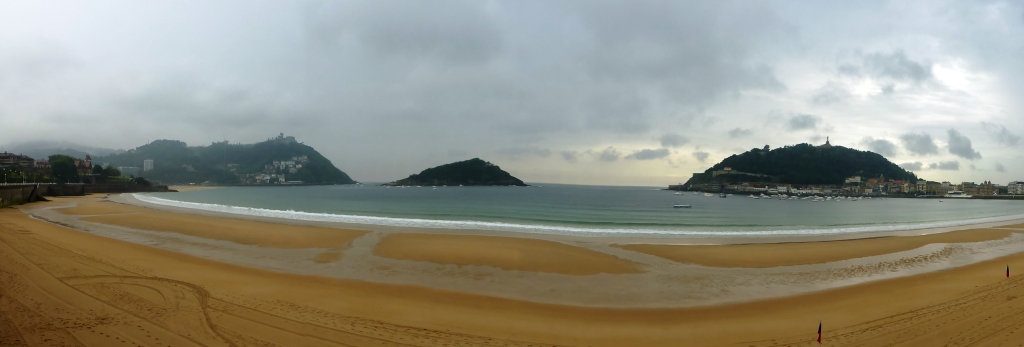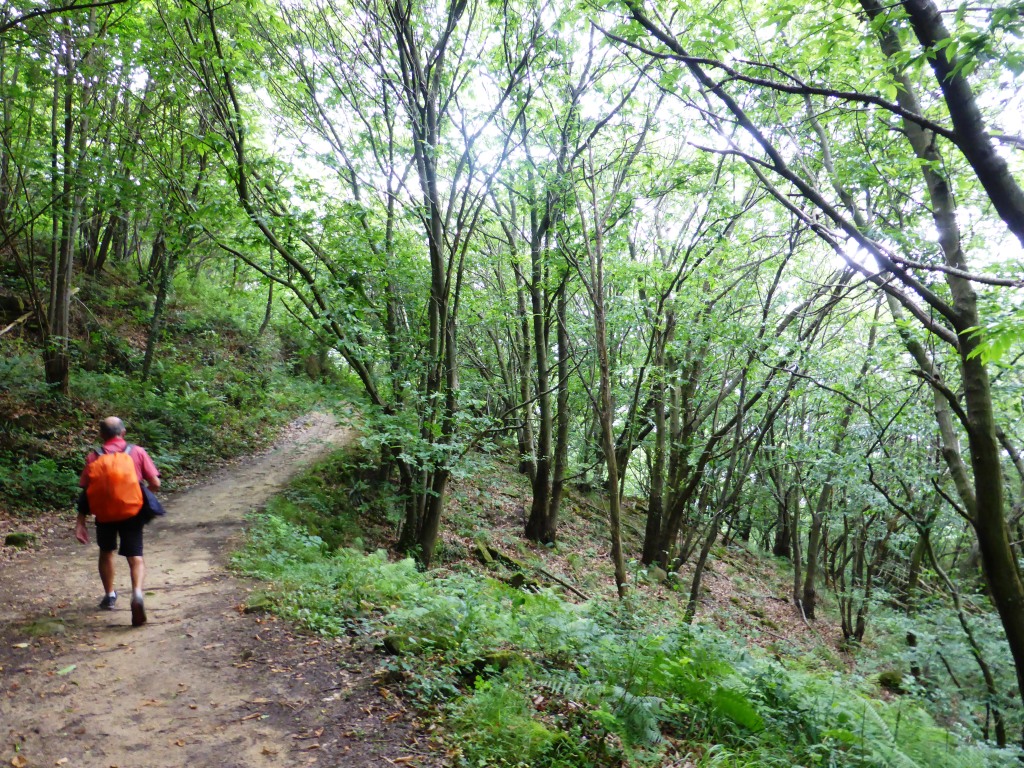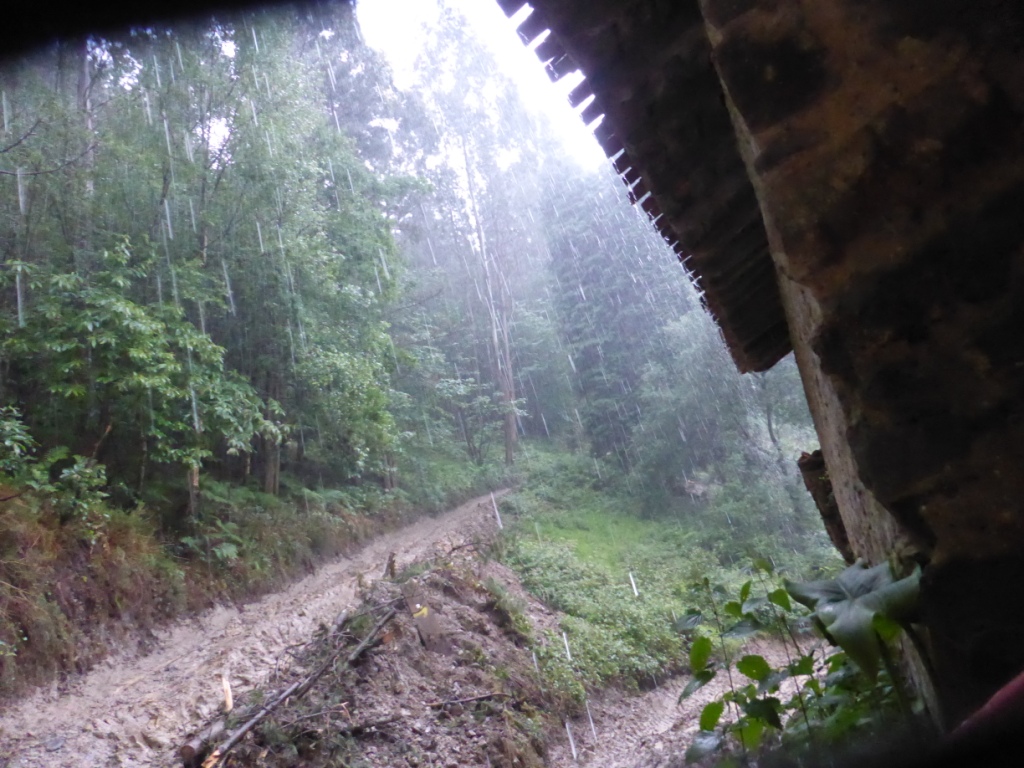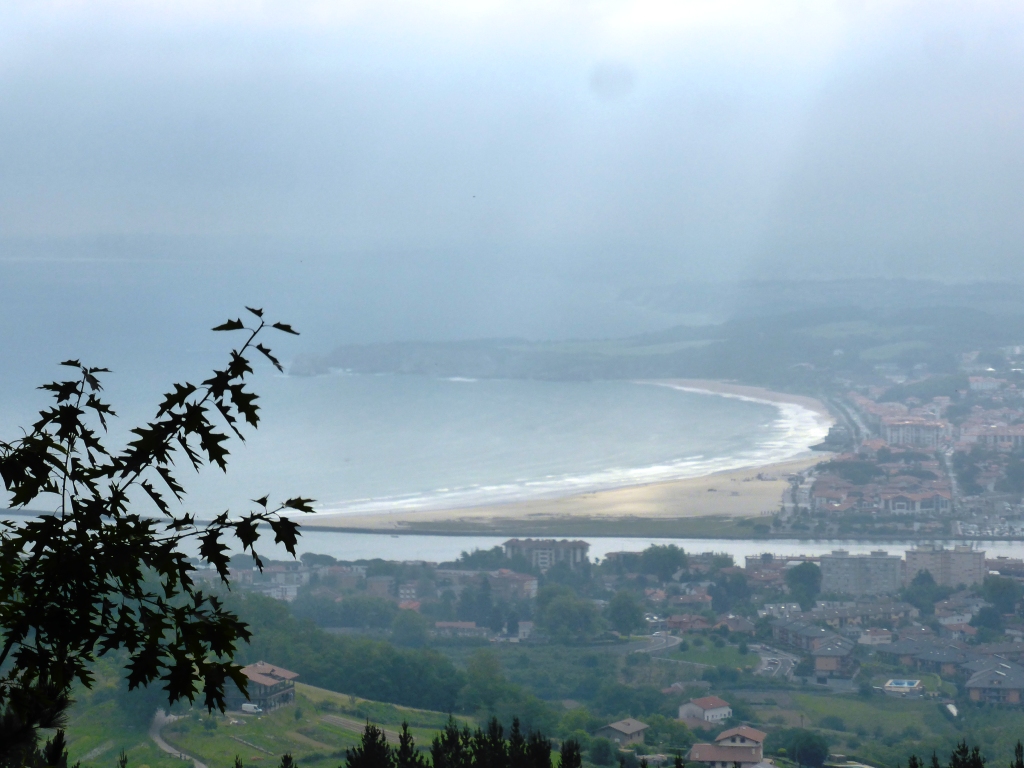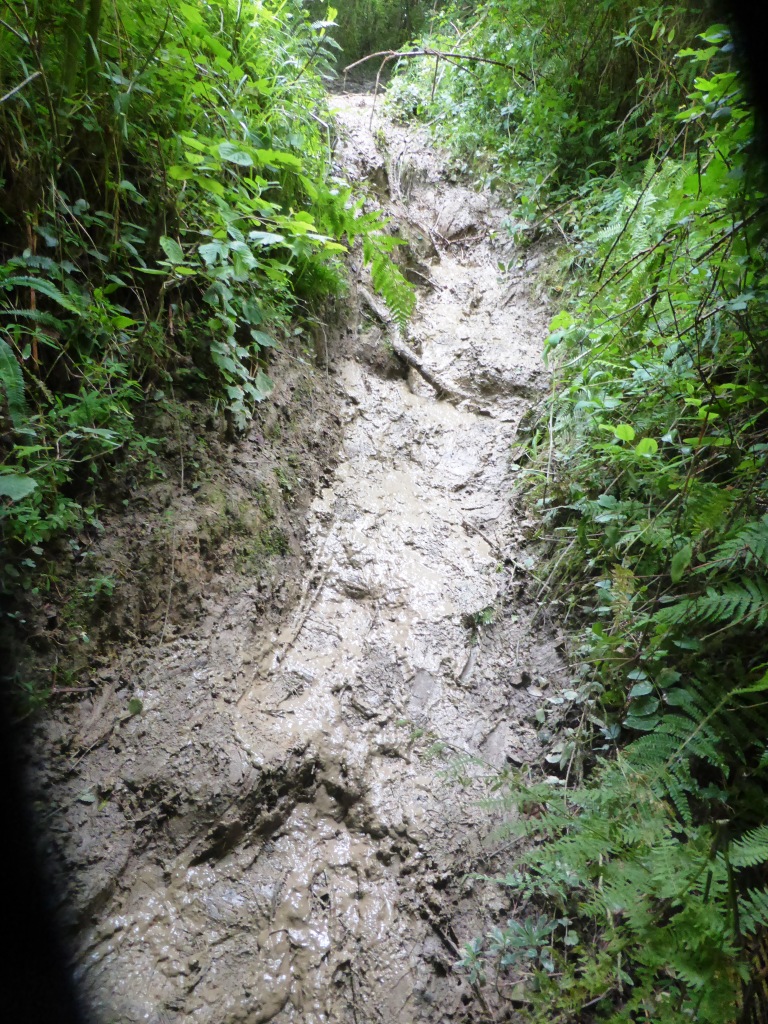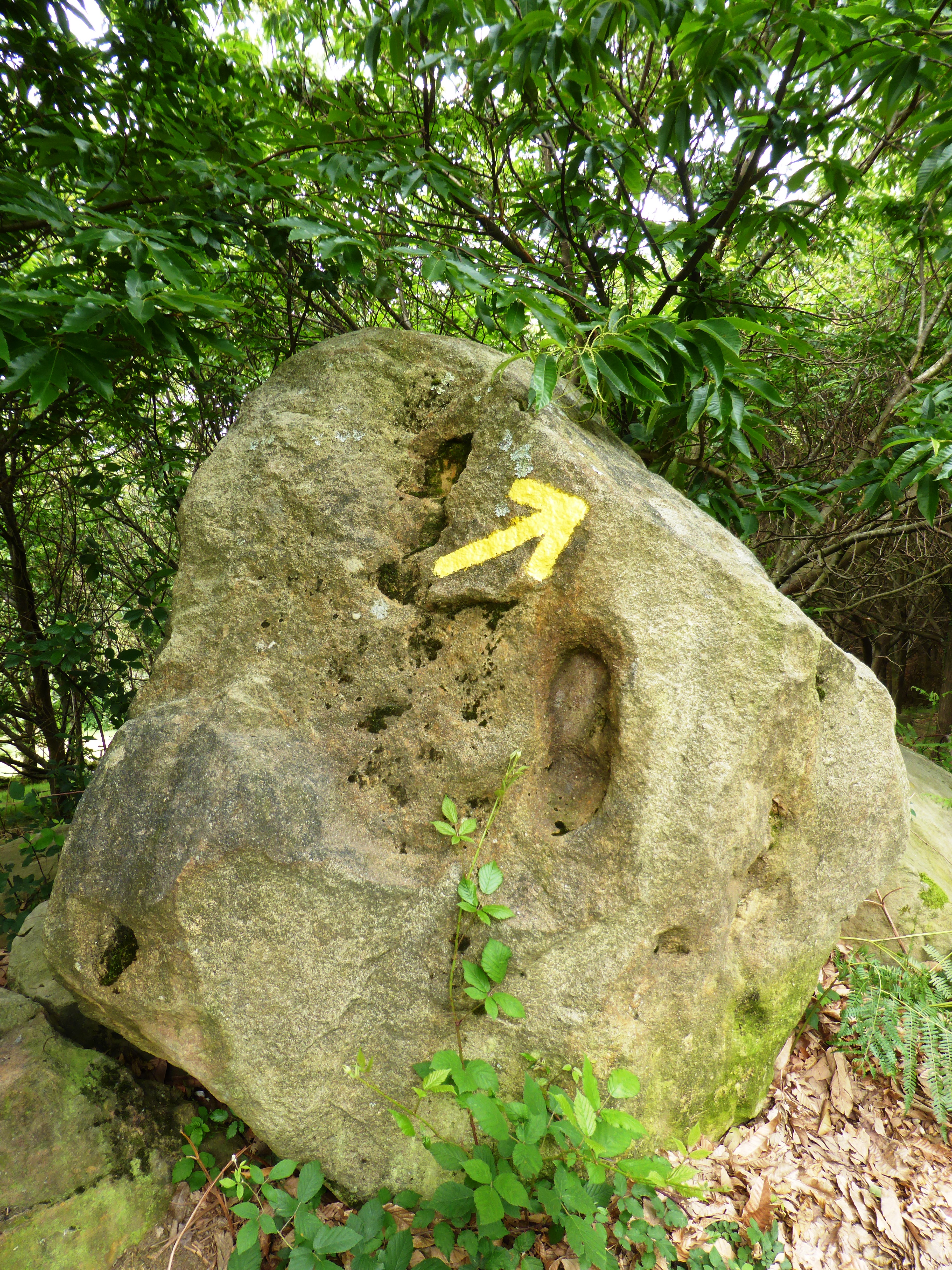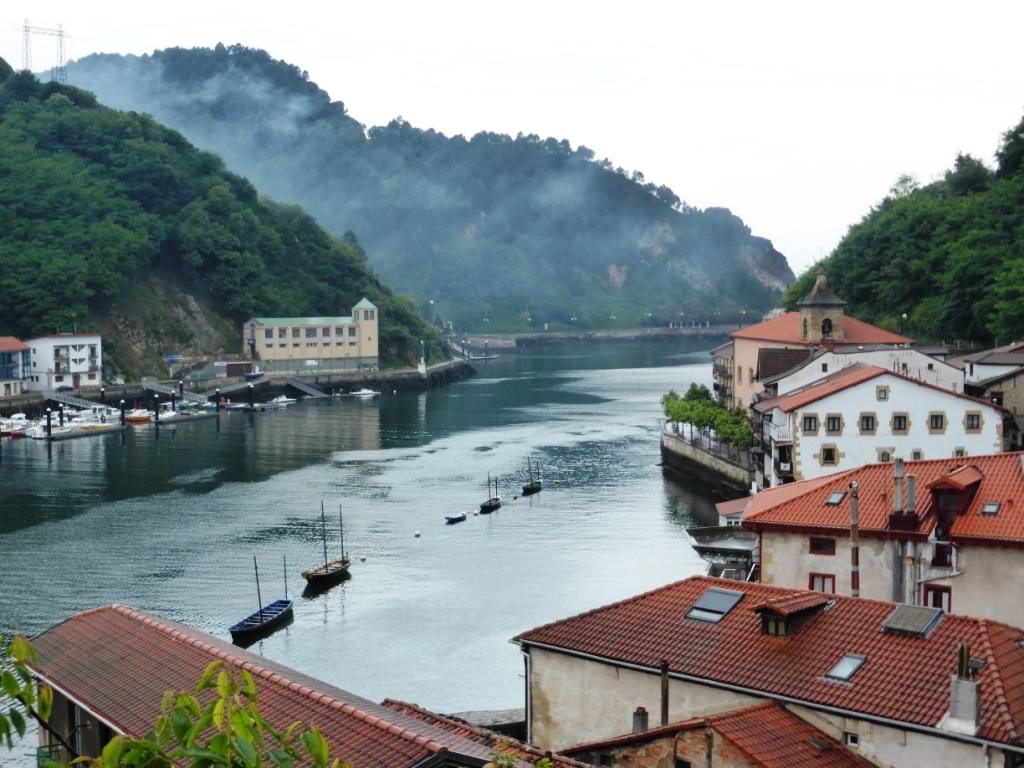Camino del Norte: Irun to Gernika
What is Time?
I met an Irishman on the Camino who told me the story of the farm boy who was driving a pig through a village. It was taking forever since the pig had a mind of its own and would go everyway but forward.
“Seamus, why have you not tied a rope through that ring in its nose and be pulling it after you?” came the suggestion from one of the many bystanders.
“Now, why should I be doing that”, asked Seamus.
“Because of all the time its taking the pig to move forwards,” was the reply.
Seamus looked puzzled and said, thoughtfully, “Now, what’s time to a pig?”
Relatively slow.
I am already a slow walker but the Camino del Norte in the Basque country has slowed me down, not just in km/hour which dropped from my usual average of over 3 to less than one at times, but has changed me from being a pilgrim being led on to a destination to being a wanderer very much like Seamus’ pig. The first part of this Camino from Irun to Gernika has been full of discontinuities, deviations and mud at close quarters.
Timelessness
On my first day from Irun, some 40 pilgrims set out from the Albergue, nearly all of us starting on our first day at the crack of dawn. The pace was set by the fact that the Camino leaves Irun swiftly without passing shops and only a few bars and, after that, there is nothing to sustain the pilgrim other than the simple breakfast offered in the albergue, until Pasajes some 18km later. The Camino climbs steeply like an airplane at take-off and I felt as if I were being lifted out of the busy, noisy world of one of Europe’s most important transport corridors which squeezes itself like a pulsating artery inside the armpit of the Bay of Biscay, between the Pyrenees and the Atlantic Ocean.
Several of the hospitaleros told me, in the following days, that many pilgrims give up on these first stages of the Camino, often setting off at far too taxing a pace on the first few days. I didn’t fall into that trap. leaving all notion of time and distance at sea-level, yet, on my tenth day I decided that the physical effort which this Camino required was such that I needed a pause. Twice I woke up with my tachycardia which has been well under control for several months.
I feel I have had a very intimate experience with the Basque Country, thanks, mainly to the mud and the steep descents, often in unusual postures, being embraced and man-handled by hidden bog and unfaithful stepping stones. Hands and knees, backwards, became my favourite position, if you are interested in detail. So time, too, became a mere detail, all the more since these were the longest days of the year.
Imprinted on the Soul.
This First part of the Camino del Norte was a tremendous physical struggle for me and demanded such concentration in nearly every step that I felt I was missing out on my more usual Camino experience of silence and contemplation when the rhythm of walking seems to free the mind of its usual chatter: the challenge of this Camino seemed like constant chatter and distraction. However, as I am learning, work is going on within me, at the heart of my being, even in such times of preoccupation or discomfort. In the days after I stopped walking, once I had arrived in Gernika, the profound peace of the Basque country, its rolling hills and vertical ascents and descents, its green and its green and its green, its people and its language, its self-confidence and authenticity, its integrity and its beauty have imprinted their soul on mine.
Back to go onwards.
On Wednesday, that will be July 1st, I am returning to Gernika for another bite at this Camino. 10 days ago I gave up exhausted with storms and mud: the whole of Spain is now in a heatwave and I’ve not read the Pope’s encyclical on climate change. I’ve not had time.
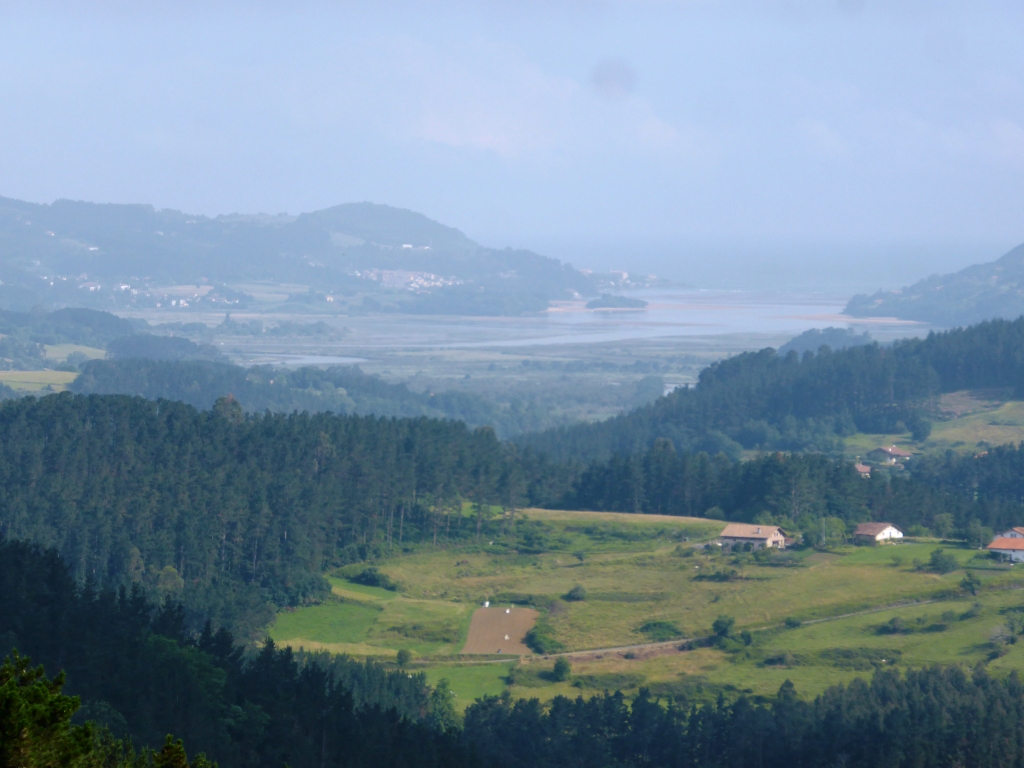
Ariving in Gernika, the Camino rises to offer a rich cocktail of sea, sky and land, looking down towards Bermeo.
Photos from Irun to Gernika ;
http://www.the-raft-of-corks.com/blog/photos1/?wppa-occur=1&wppa-album=15&wppa-photo=444

